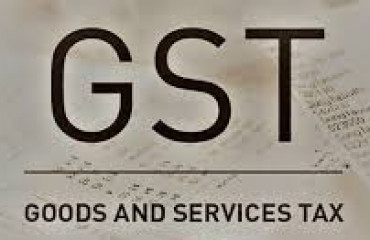
The introduction of a goods and services tax (GST) a little over five years ago was undoubtedly the single-biggest reform of indirect taxes in India. Compliances have eased, logistics have improved, tax incidence has steadily declined, and revenue growth as well as buoyancy have shown marked improvement.
The introduction of a goods and services tax (GST) a little over five years ago was undoubtedly the single-biggest reform of indirect taxes in India. Compliances have eased, logistics have improved, tax incidence has steadily declined, and revenue growth as well as buoyancy have shown marked improvement.
Around the same time, a real-time payment system developed by National Payments Corporation of India (NPCI) was launched that would radically alter the digitization of payments in the country. Enter the Unified Payments Interface (UPI). Regulated by the Reserve Bank of India (RBI) and running on the back of an open-source API, the Immediate Payment Service (IMPS), UPI has facilitated explosive growth in peer-to-peer as well as peer-to-merchant transactions.
In December 2022, over 7.8 billion UPI transactions were recorded, valued at over ₹12.8 trillion. Just a year earlier, in December 2021, the corresponding figures stood at 4.6 billion and just under ₹8.3 trillion. This marks a 71% rise in volume terms and 55% in value terms (bit.ly/3XeTqHo). It also indicates the decreasing ticket size of the payments being made, which points to greater diffusion and adoption by smaller merchants/payers. Half of all payments made on UPI are already under ₹200 (bit.ly/3VYzOG4).
Alongside this growth has come a rise in GST revenues and a substantial increase in the GST taxpayer base. At the time of this tax regime's introduction in mid-2017, the number of taxpayers was a little over 6.2 million. This figure has since increased to over 14 million in November 2022. On the other hand, the number of active companies registered in India as of October 2022 was 1,492,015 compared to 1,157,774 as of July 2017, a 29% increase (bit.ly/3k8cyIo).
Interestingly, in 2021-22, GST collected from migrated taxpayers contributed about 80.2% of the total GST collections, with the remainder coming from new taxpayers (bit.ly/3X8P7NU). This indicates not only the increased formalization of the economy, but also the fact that newer entrants to the GST regime are smaller businesses or MSMEs. This is further illustrated by the average GST collected per migrated GST Identification Number (GSTIN) being ₹4.42 lakh and that for new GSTIN being ₹1.13 lakh.
The increase in digitization of payments is both a cause and an effect of this enhanced formalization. While several countries have seen growth in digital payments, what is unique about the Indian story is the administrative underpinning of the system, which created a non-profit company to provide a digital public good. International organizations, including the International Monetary Fund (IMF), have noted that this public good approach to providing digital financial infrastructure is a global best practice and is relevant for all economies, whatever their stage of development (bit.ly/3wg7ZyJ).
There exists significant literature indicating a positive relationship between the digitization of payments and improved tax revenue (Dogan, 2011; Immordino and Russo, 2018; Slemrod et al, 2017). In the Indian context, this correlation has been discussed in a recent paper by Jerome Joseph and N. Ramalingam. Monthly GST collections plotted against monthly UPI and IMPS transactions reflect a broad correlation (see chart above).
The reasons for this correlation are not far to seek. Digital payments leave a digital footprint. This leads to greater traceability and transparency. The enhanced flow of GST input tax credits (ITC) in the value chain builds an incentive for upstream and downstream businesses to also account for their transactions, which encourages compliance by all those involved. It's a force for formalization.
The increased adoption of digital payment mechanisms has boosted smaller businesses, since it enables fast and secure bank-to-bank transactions, even for small sums. Further, it facilitates easy money transfers across cities—a boon for migrants. The covid pandemic also encouraged technology adoption, since it obviates the need for physical contact.
As an observation of state-wise growth of GST collections and deposits held by scheduled commercial banks over the last four years also bears out, GST collections and deposits held by scheduled commercial banks have broadly kept pace (bit.ly/3iuCBcg).
As data costs come down and smartphones become ubiquitous across the country, digital payments will likely increase further. The digital payments space has seen a lot of activity recently, with the linking of UPI with Singapore's PayNow; Bhutan and Singapore already have UPI acceptance at their merchant locations, and RBI has operationalized its central bank digital currency, notably with a pilot project for a retail e-rupee (e ₹-R). All of this is expected to create a virtuous cycle with GST collections, which, in turn, is likely to further improve compliance.
The combined potential of GST and India's digital infrastructure advancement for the formalization of the Indian economy is both heart-warming and exciting because this begets financial inclusion and higher incomes for micro and small businesses and hitherto-excluded households. This effect is being recognized (econ.st/3kcOsw0) even in sceptical quarters. The payoffs from assembling the building blocks of tax reforms and digitization will be evident in our micro and macro level indicators in the years ahead.
These are the authors' personal views.
V. Anantha Nageswaran and Devi Prasad Misra are, respectively, the chief economic adviser to the Government of India and an Indian Revenue Service (customs and indirect taxes) officer.These are the authors' personal views.
